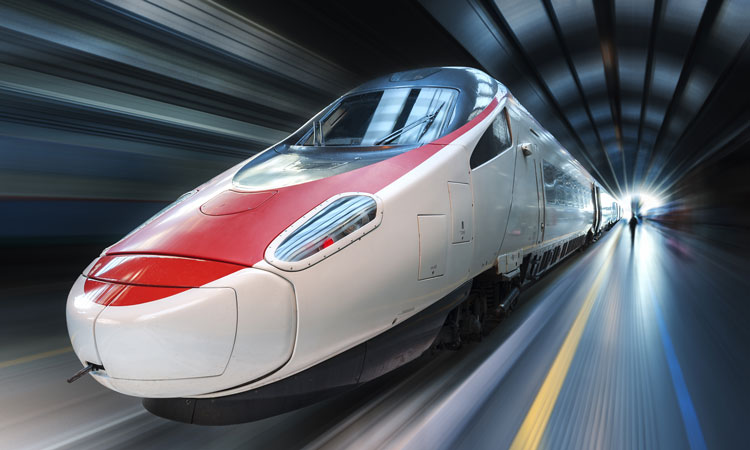Railway safety and interoperability requirements and new TSIs
Posted: 1 March 2023 | Jakub Tomczak | No comments yet
The objective of the European Union is to establish a single European railway area in which rail transport will be safe and interoperable. Jakub Tomczak, railway safety and interoperability lawyer, outlines in this article the aspects arising from the technical pillar of the Fourth Railway Package, particularly about the recent work of the European Commission and the European Union Agency for Railways (ERA) – the new Technical Specifications for Interoperability (TSIs).


The Fourth Railway Package is a set of legislative measures aimed at completing the Single European Railway Area (SERA) and improving the competitiveness of the European railway market. The technical pillar of the Fourth Railway Package focuses on harmonising technical standards and regulations to improve interoperability and safety across the European Union (EU).
The key aspects of the technical pillar include:
- Aims to establish common technical standards for railway systems, equipment and components, making it easier for different railway networks to work together and improve the interoperability of the European railway system
- Setting out requirements for safety management systems and safety certifications for railway companies, and including provisions for the investigation of accidents and incidents to improve safety
- Establishing a new system of certification for rolling stock, infrastructure and maintenance facilities to ensure that all equipment and infrastructure used in the railway system meet common safety and technical standards.
Digital rail and green freight
The EU has recognised the importance of digital rail and green freight to achieve sustainable and efficient transportation. The EU has set targets to reduce greenhouse gas (GHG) emissions and increase the use of renewable energy in the transportation sector. Digital rail and green freight are seen as key strategies to achieve these targets.
Digital rail is an important part of the EU’s strategy for the SERA, which aims to create a more efficient and integrated railway system across Europe.
Digital rail is an important part of the EU’s strategy for the SERA, which aims to create a more efficient and integrated railway system across Europe. The EU has provided funding to support the development of digital rail solutions, such as the European Rail Traffic Management System (ERTMS). ERTMS is a digital system that standardises railway signalling and control across Europe, making cross-border travel more efficient and reducing the need for physical infrastructure.
Green freight is another important initiative in the EU’s transportation policy. The EU has set a target to reduce GHG emissions from freight transport by 30% by 2030 compared to 2005 levels. To achieve this, the EU has launched several initiatives to promote green freight, such as the Green Freight Europe programme which encourages the use of cleaner and more efficient modes of transport, such as rail and inland waterways, and the adoption of green logistics practices, such as optimised route planning and load consolidation.
Digital rail and green freight are closely related as digital rail can help to optimise freight operations, reduce delays and improve the efficiency of rail transport. For example, by using digital technology to track the location and condition of goods in real-time, logistics companies can optimise their transport networks, reduce the need for empty journeys and improve the overall efficiency of the supply chain. Additionally, digital rail can help to reduce energy consumption and emissions by optimising train operations and reducing energy waste.
Railway interoperability and safety
Railway interoperability is important for the efficient and safe operation of trains across borders and between different railway networks.
Railway interoperability refers to the ability of different railway systems to operate together seamlessly and safely. It involves ensuring that trains, infrastructure and control systems from different countries or regions can work together without any compatibility issues or safety concerns. Railway interoperability is important for the efficient and safe operation of trains across borders and between different railway networks. It enables the movement of goods and people across international and regional boundaries, facilitating trade, commerce and tourism. To achieve railway interoperability, various technical, operational, and regulatory measures are implemented. For instance, different countries or regions may need to adopt common standards for train signalling, communication systems, power supply and track gauge.
Railway safety is one of the primary concerns addressed by the Technical Specifications for Interoperability (TSIs) which set out technical requirements and standards for various safety-critical aspects of railway systems, including:
- Control-command and signalling (CCS) systems: the TSIs specify requirements for the signalling and control systems used to manage train movements, ensuring that these systems are safe and interoperable
- Rolling stock: the TSIs set out requirements for the design and construction of railway vehicles, including their performance, safety features and compatibility with the infrastructure
- Infrastructure: the TSIs specifies requirements for the design and construction of railway infrastructure, including track, bridges and tunnels. These requirements ensure that the infrastructure is safe and interoperable and can accommodate the rolling stock that operates on it
- Operations: the TSIs set out requirements for the safe and efficient operation of trains, including requirements for train drivers, train crew and maintenance staff.
By setting out common technical standards for these safety-critical aspects of railway systems, the TSIs help to ensure that railway transport is safe and efficient across the EU. This is important for both passengers and freight, as well as for the railway industry as a whole, which benefits from the increased interoperability and efficiency.
ERTMS requirements: a key aspect of railway safety and interoperability
By providing a common system for train control and command, ERTMS makes it easier for trains to cross national borders and move between different railway networks.
ERTMS is a standardised system for train control-command and signalling (CCS), aimed at improving railway safety and interoperability across Europe. The ERTMS is designed to provide a harmonised and integrated system for train control and command across Europe, replacing the existing patchwork of different national systems that had been in place.
One of the main goals of ERTMS is to improve railway safety by reducing the risk of train collisions and derailments. The system provides a range of safety features, including continuous train monitoring, automatic speed control and strict separation between trains on the same track. ERTMS also includes a range of fail-safe mechanisms that are designed to prevent accidents and protect passengers and crew.


Another important goal of ERTMS is to improve interoperability between different railway networks across Europe. By providing a common system for train control and command, ERTMS makes it easier for trains to cross national borders and move between different railway networks. This reduces the need for the complex and time-consuming processes of switching between different systems, helping to increase efficiency and reduce costs.
Overall, ERTMS represents a major step forward in the development of a common European railway system and has the potential to significantly improve safety, efficiency and interoperability for train operators and passengers alike.
It should be kept in mind that currently the construction of trackside ERTMS within the EU requires the involvement of the European Union Agency for Railways (ERA). Its task is to approve the proposed trackside solutions to comply with the applicable TSIs and therefore ensure they are fully interoperable. The approval of the proposed solutions (ERTMS trackside approval) should take place at the earliest possible stage before the investment starts.
New TSIs proposal
The revision of the TSI will enable the further harmonisation of railway specifications, which will have a positive impact on the flexibility, efficiency, and reliability of railways in Europe.
The entry into force of the Directive on the interoperability of the rail system within the EU meant that work on new TSIs had to begin. Specific objectives for the new TSIs, aimed at improving interoperability, are provided for in Directive 2016/797 and Commission Delegated Decision 2017/1474. Work on the content of the new TSIs is currently underway. It is expected that they should be completed by mid-2023.
The revision of the TSI will enable the further harmonisation of railway specifications, which will have a positive impact on the flexibility, efficiency, and reliability of railways in Europe. The regulatory changes will also help to achieve the European Green Deal and are therefore a further step towards achieving EU climate neutrality. Proposed solutions include topics such as the development of intermodal transport, the implementation of ERTMS, or the implementation of derailment prevention functions.
CCS TSI
In railway operations, control-command and signalling (CCS) systems are critical to ensuring safety. CCS refers to the instructions given by a train controller to the driver of a train, including speed restrictions, stopping at a certain point, and diverting onto a different track. The control commands are communicated to the driver through signalling systems.
Signalling systems, on the other hand, are a network of devices that communicate information to train drivers and control centres. The signalling systems use various types of signals, such as lights and audible warnings, to convey information about the condition of the track, the location of other trains, and other important information to train drivers.
Together, CCS helps to prevent collisions and other accidents on railway tracks. The signalling system can detect if two trains are on the same track and send a signal to the control centre to prevent the train from moving. In addition, control commands can ensure that trains are travelling at appropriate speeds and stopping at the right places to prevent collisions or other safety hazards.
As proposed in the new CCS TSI, the existing framework should be modernised to enable new functionalities associated with the digitalisation of railway networks. This should be achieved through the use of digital technologies such as ERTMS, automated train operations (i.e. GoA 2), advanced train positioning and digital automatic couplers (DAC).
According to the draft, the regulations will apply primarily to the construction of a new subsystem, both trackside and on-board, as well as in the case of renewals.
Conclusion
The TSI revision also covers INF, ENE, TAF/TAP, PRM, SRT, and the CCS TSI revision itself is very broad and would require a much longer article. Finally, it is also worth mentioning that the Global System for Mobile Communications – Railway (GSM-R) should shut down around 2030. In its place will be the Future Railway Mobile Communications System (FRMCS). For the time being, the CCS TSI proposal includes a description of the interface, but concrete specifications have not yet been developed.










